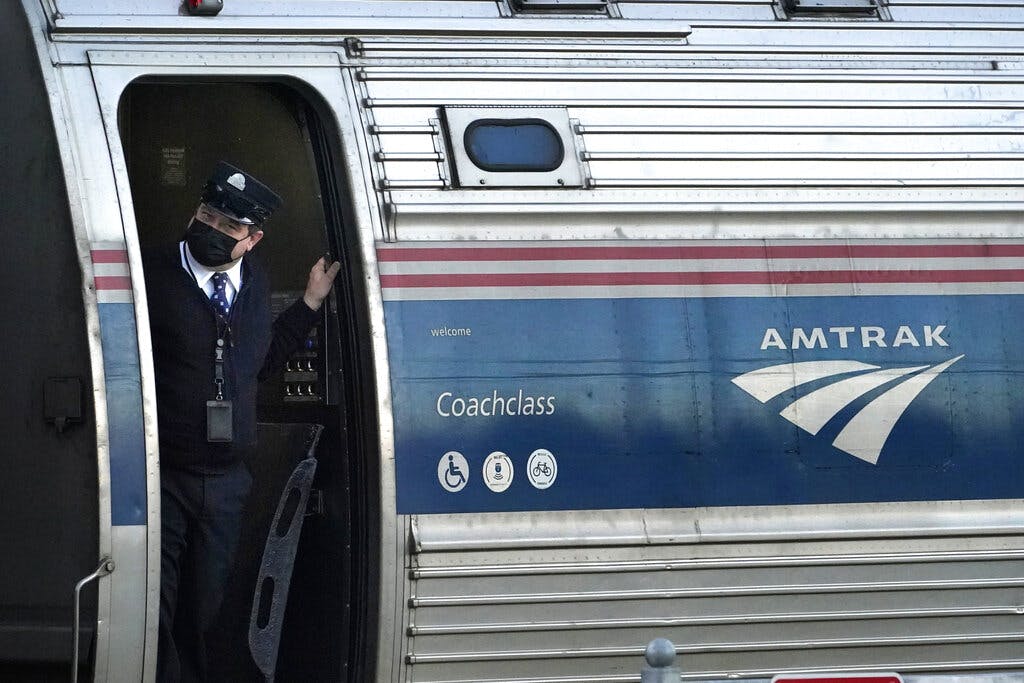If You Don’t Mind Delays, Amtrak Offers a Great Way To Get Rail
Just the ticket for visiting long-lost friends and seeing bits of the country, I thought upon learning I could get 10 rides in 30 days for $299.

Call it my “Friendship Tour.” When I saw Amtrak was offering 10 rides for $299 in a 30-day period on its USA Rail Pass, I thought: “What a great way to visit long-lost friends and see the country.”
The first two sectors, to New York from Washington, D.C., and back, were easy. More than 20 trains a day run between Washington and Baltimore, Philadelphia, and New York, and some all the way to Providence and Boston. Called the Northeast Regionals, they strive to run more or less on time.
Arriving at New York, I felt a longing for the grand old Penn Station, many years ago displaced by the ugly Madison Square Garden monolith. The trains, as always, come and go deep underground. You work your way through subterranean corridors to the subway or up to the street. In New York for two nights, there was time for a couple of shows, lunch with a Korean journalist, and dinner with a long-time Chicago reporter.
For the return to D.C., I got my first glimpse of Moynihan Hall, opened in early 2021 in the historic James Farley post office building on Eighth Avenue across from the main station. The hall looks modern and spacious before the descent into a labyrinth that hasn’t changed much in decades.
Back and forth between Washington and New York was the easy part. Next stop: Chicago.
Two trains run between D.C. and Chicago. The Cardinal, if it hews to schedule, takes you on a 27-hour journey, with stops in Virginia, West Virginia, and Cincinnati before veering northwest to Indianapolis and the windy city. The other train, the Capitol Limited, via Pittsburgh and Cleveland, takes 17 hours, but forget it: That one had no seats, any day of the week, for those on USA Rail Pass.
It was the Cardinal or nothing. As we lurched over the Alleghenies, the conductor warned us the railroad was quite old and we’d be swaying back and forth. The Virginia legislature has authorized funds for improving the mountainous portion, he said, and then warned of the danger of losing your balance if you stood up as the train rounded a series of curves.
Heavy rain and 60-mile-an-hour gusts forced us to inch along at 20 mph. Then, as the weather cleared, we waited as freight trains rumbled by, setting us still more hours behind schedule.
Two days later, after seeing old journalist colleagues from the Chicago Tribune, I was on the City of New Orleans, bound to Jackson, Mississippi. This train was a double-decker with an observation car on the top tier from which you could gaze out the window from a lounge chair. One car away was the cafe car — the same on all the trains, serving coffee, drinks and snack food. Again, you could count on freight trains taking priority, delaying us for an hour or two into Jackson.
Getting out of Jackson was the hardest part. The plan was to avoid Chicago and board the next leg at Meridian, 92 miles east, for an overnight 23-hour trip to D.C. on the Crescent, up from New Orleans. There was no public transport between Jackson and Meridian; my host, a retired book editor, sped me over via the interstate in 90 minutes.
The station was deserted when we got there, but eventually the Amtrak man showed up. Sorry, he said, we had a wreck up the line in Alabama; we should have a train tomorrow. Back to Jackson for another night, but no ride the next day to Meridian. A good excuse to board the City of New Orleans from Jackson and spend a night in the Big Easy. I would be able to check out Bourbon Street, which I had last visited 40 years earlier, before boarding the Crescent two days later for D.C.
Following through on that idea was dicey. Over the phone a ticket agent told me all seats were filled. After a seemingly endless wait, he transferred me to “customer relations.” More waiting before a woman named Dawn told me she’d try to help. After another long hold, mercifully, Dawn got me booked to New Orleans the next day, again on the City of New Orleans, and two days later on the Crescent to D.C.
The local TV news that night showed an Amtrak spokesman talking about the derailment in Alabama, assuring everyone there were no chemicals or other bad stuff aboard, as in the earlier Ohio derailment. There was no answer, though, for why 37 freight cars were thrown off the tracks, looking on TV as if they’d just been picked up and tossed there. Miraculously, nobody was injured; the story was soon forgotten.
As a vacation traveler, not on business, I didn’t mind wandering up and down Bourbon Street, throbbing with music and crowds, sure that the next day the Crescent would be departing on schedule as promised from Union Terminal, the city’s hub for trains and buses, not to mention one of those great, old-style streetcar lines.
I should have known better. They were still cleaning up the derailment, a genial Amtrak agent said, but not to worry. Amtrak had chartered a bus that would take us to Atlanta, where the Crescent would be waiting.
This time, Amtrak was as good as its word, but who knew bus transportation was faster than the train? The bus whisked us to Atlanta as promised, arriving two hours before the scheduled departure — the reverse of the usual pattern — and that included a 40-minute stopover for lunch.
Amtrak, of course, wasn’t done with us. Nodding off in a coach class seat, I wondered why the train was moving quietly, disturbing no one. Waking up a couple of hours later, I realized the train had been sitting still the whole time, waiting for the inevitable freight to go by. Had it too been delayed by the derailment? En route, we had to wait for two more freights, and arrived at D.C. several hours late.
Next on my agenda was a Northeast Regional to Providence. There were no USA Rail Pass seats on the afternoon train, but the night train would be fine. It wouldn’t get to New York and then Providence exactly on schedule, but by now delays of 20 or 30 minutes were nothing. There was still time for dinner that night with a classmate and lunch the next day with an old talk show yakker I hadn’t seen in years.
On the way back, the conductor, announcing the usual delays, was careful to add, “No guarantees” to everything. After having waited for a freight, he assured us we’d soon be on our way “unless we’re delayed for some unforeseen reason.” We were a mere half an hour late getting into D.C. — just in time for the last Metro to my neighborhood.

